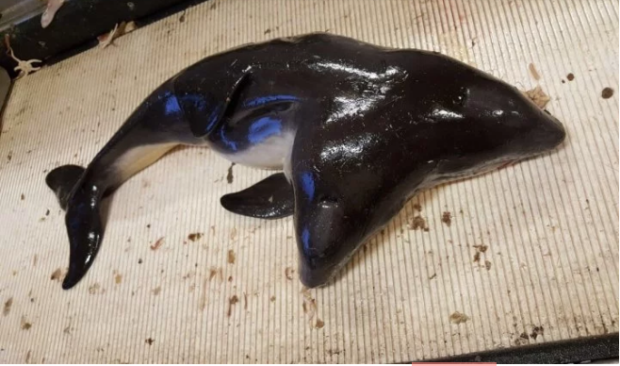
Image from Deinsea Journal/Henk Tanis
Last month, a group of Dutch fishermen was going through its daily fishing routine when it noticed a baby porpoise stuck in one of its nets.
The creature, however, proved to be quite an oddity, as the deceased harbor porpoise had two conjoined heads.
Fearing it would be illegal to bring it back to shore, the group returned it to the ocean, but not before taking several photos of it.
The images emerged online recently, which scientists confirmed to be a rare case of conjoined cetacean twins.
“Descriptions of conjoined twins in whales and dolphins are extremely rare,” Erwin Kompanje, of the National History Museum Rotterdam in South Holland, The Netherlands, noted in his study, which was relayed by National Geographic.
“We were aware of only nine [other] published cases,” he added.
Although the researchers were unable to examine the body physically, they gathered enough material through the photos. The group confirmed that the porpoise was indeed a newborn and a male, the report said.
Conjoined twins are a rarity for newborn humans, and is even more unusual for porpoises (Phocoena phocoena), Kompanje confirmed.
“Normal twins are extremely rare in cetaceans, as there is not enough room in the mother’s body to have more than one fetus,” he said, adding that newborns need to immediately start swimming on their own or they drown.
The marine wildlife expert also said that the animal most likely died from drowning, since its tale has not stiffened—a necessary development that porpoises need in order to swim.
Meanwhile, harbor porpoises are the most abundant cetaceans in the waters of northwest Europe, which have at least 345,000 recorded by a recent study.
The peculiar case was further elaborated and published in the Online Journal of the Natural History Museum Rotterdam. Khristian Ibarrola /ra